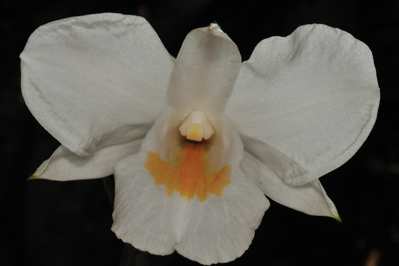Epiphyte. Stems as long as 2 to 5 ft, pendulous, smooth, slightly swollen at the nodes. Leaves 2 to 5 cm long and 1 to 2 cm in width, thick, lanceolate, tapering towards its tip, sessile (the leaves fall much early). Flowers 2 to 3 cm across, 1 to 4 in numbers from very short peduncles from the nodes of leafless stems. Sepals and petals are pale pink networked with darker shade; lip pale yellow to white with a few purple streaks on the tubular base and its mouth. Sepals sub-equal, oblong-lanceolate, sub-acute. Petals much broader than the sepals, elliptic, blunt. Lip sub-orbicular, side lobes absent, the disc hairy, the base convolute to take the shape of a tube.

The Pursuit
Come April and May, the tropical valleys of the region are full of this species in bloom. Pendulous huge clusters with hundreds of flowers can easily be spotted on most of the trees, dancing gently to the tune of morning and afternoon tropical winds. The only difficulty for people like me, is that it got a wide mouthed hairy lip which attracts all dust from those topical environment. I examined a lot of flowers to get a perfect dust free flower in vain. I understood the fact that, like many other flowers this also needed to be shot as early as it opens. We never expected to extend our stay at that place after dusk and hence were not carrting our camping equipments. As we are very known to most of the village people one night stay was not be a problem. However, I slept in the open on the banks of the mighty Teesta. My friend who accompanied me collected a lot of fallen dry leaves and dug out the sand on that river bank to make a soft natural sleeping bed for me and I had a comfortable sleep there. The next day we were up before the first light of the Sun and climbed up the tree looking for a few perfect flowers to shoot. Got this beautiful bunch and produced this wonderful photograph without much difficulty. The tragedy of this species is that in the year 2012 this species was illegally collected by the locals for some outsiders who were active with some cross border trade. It took several weeks for the administration to notice the disappearance of this species, by then most of the plants were inside the laboratories thousands of miles away.








